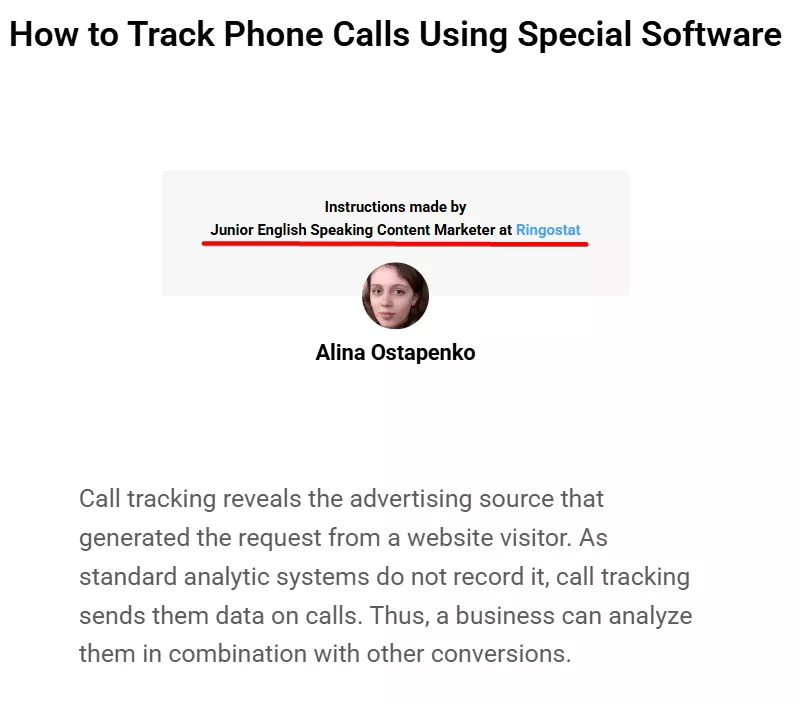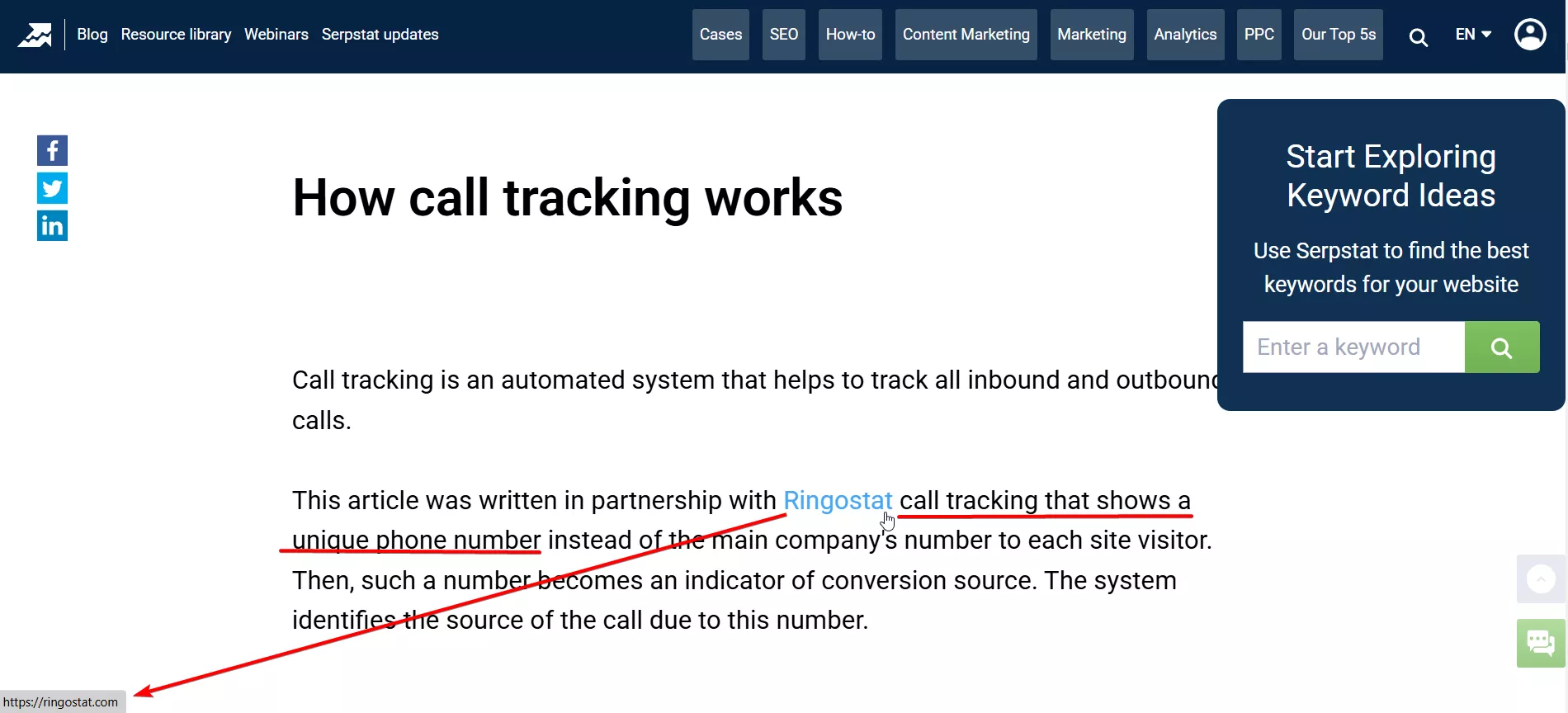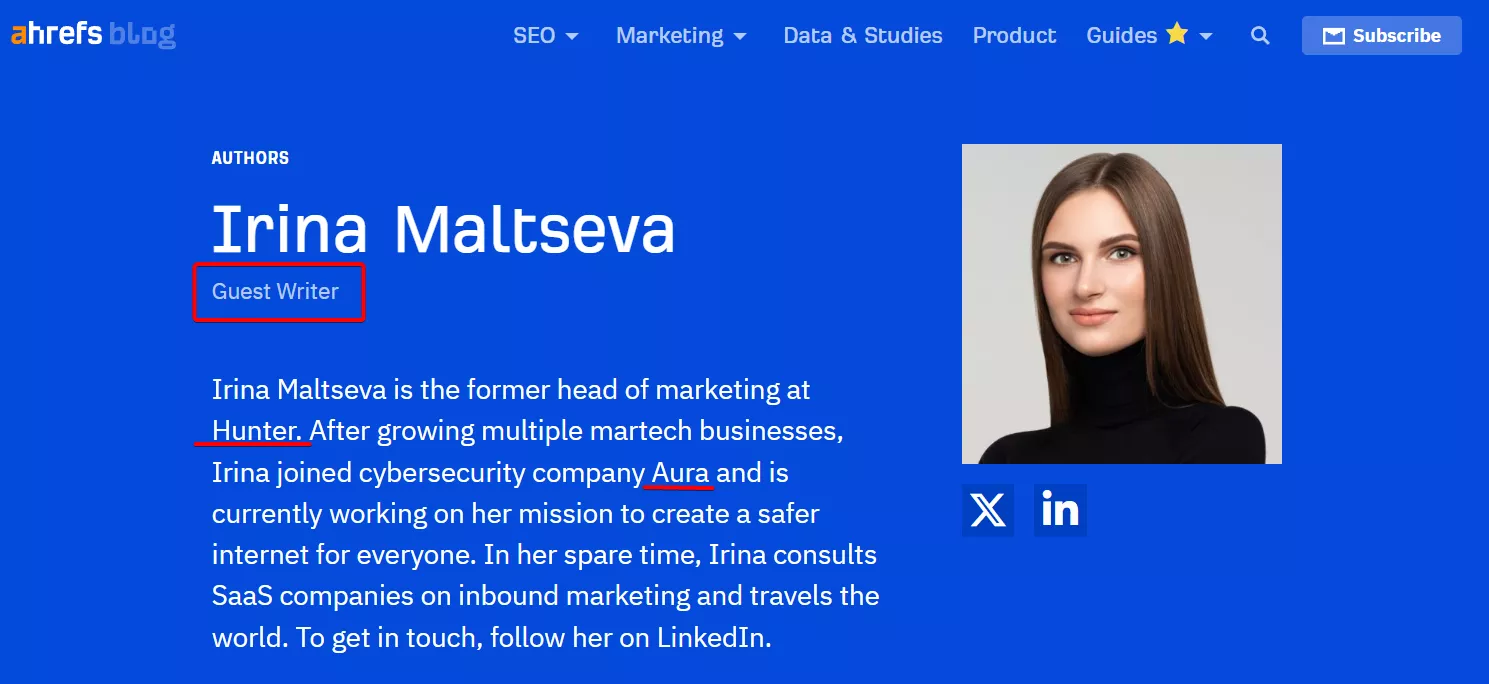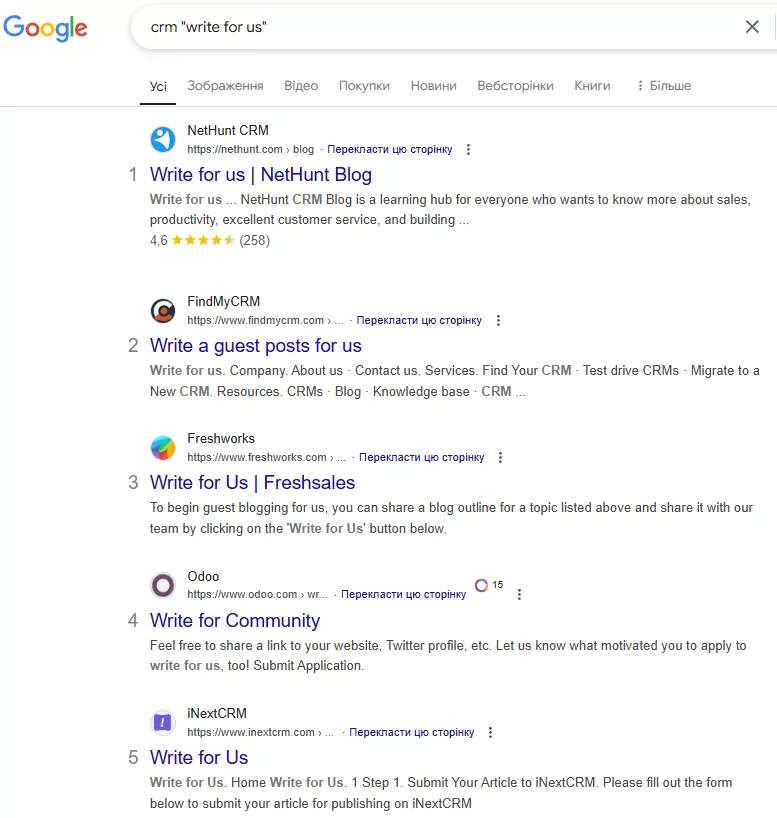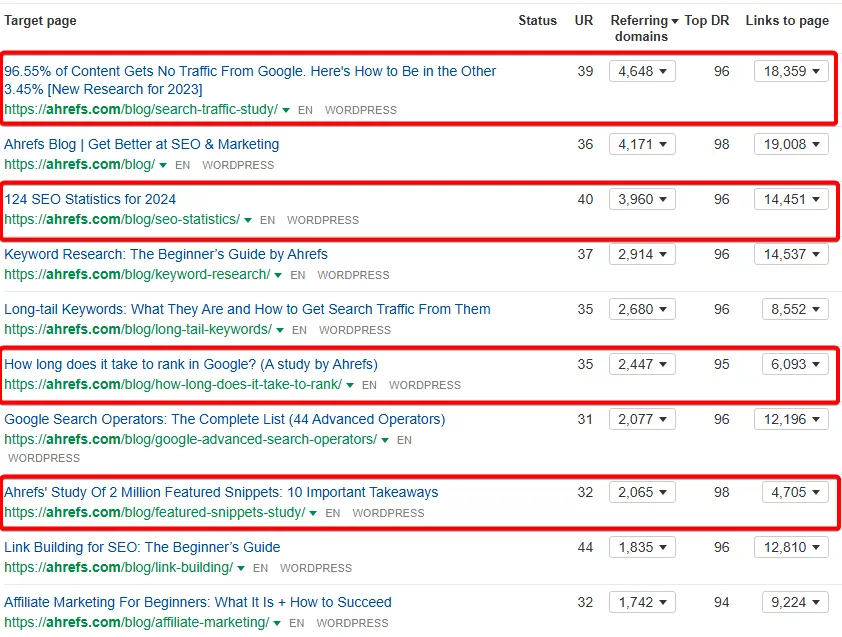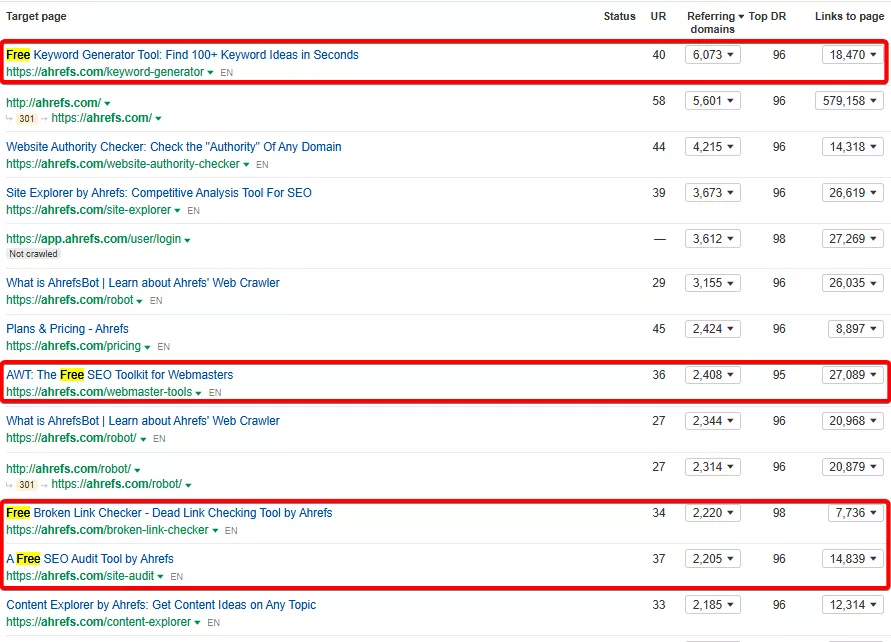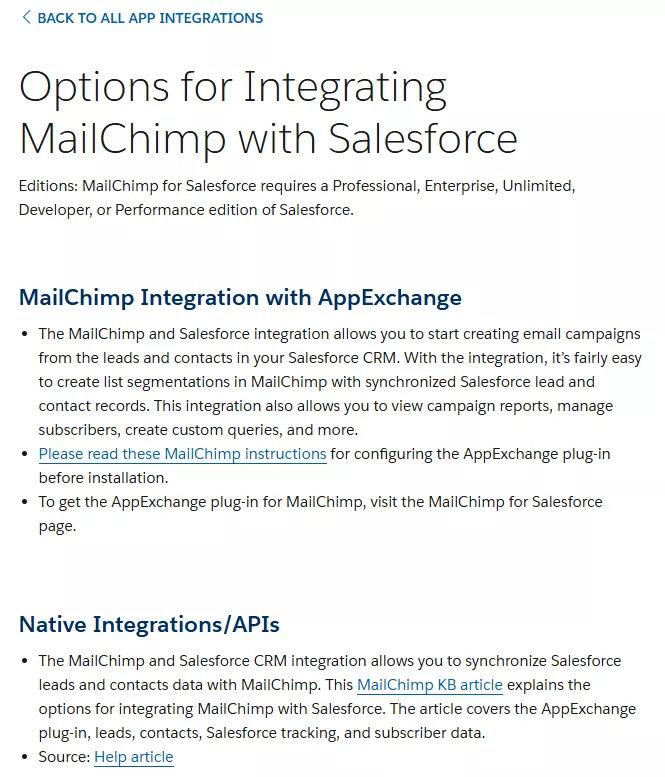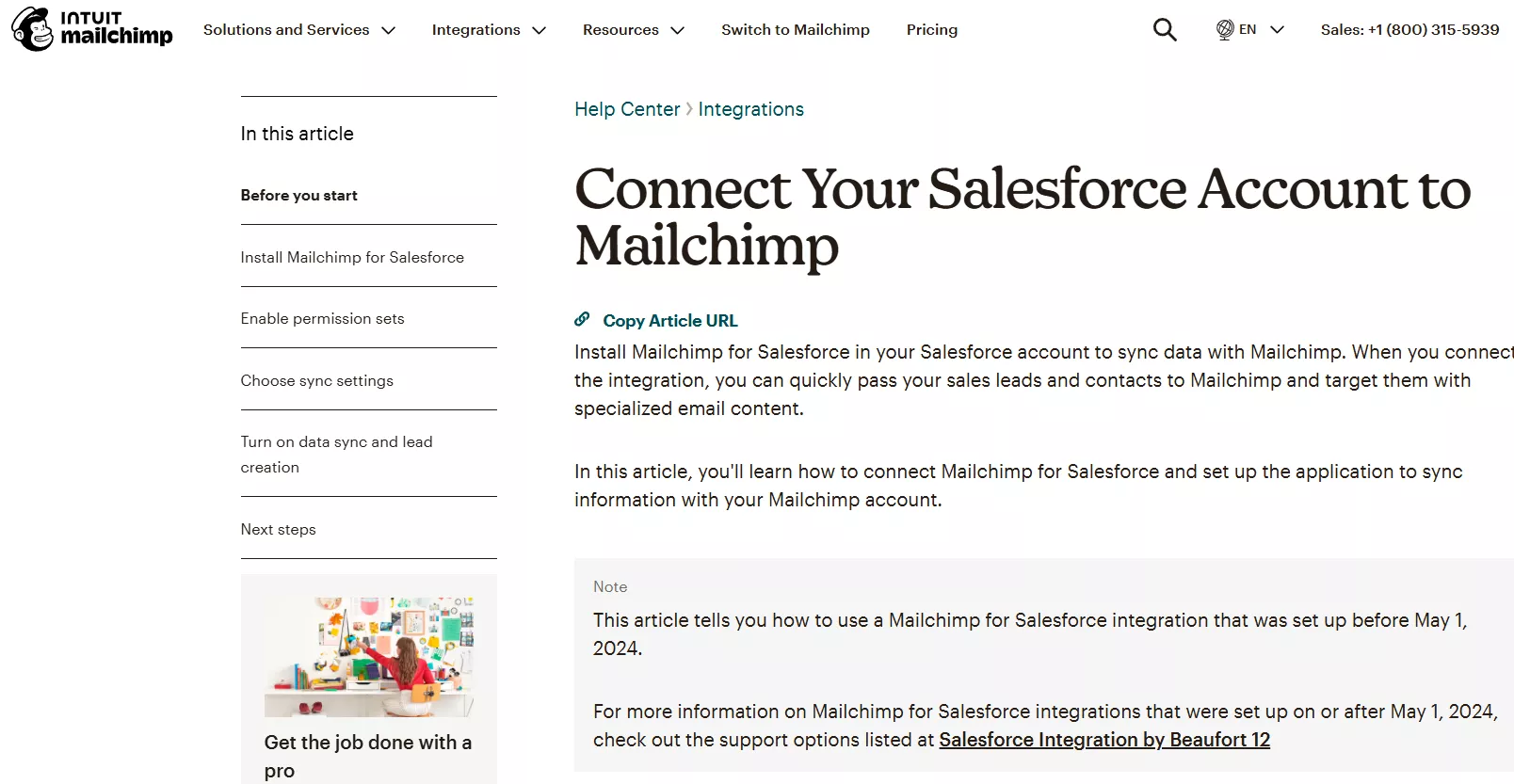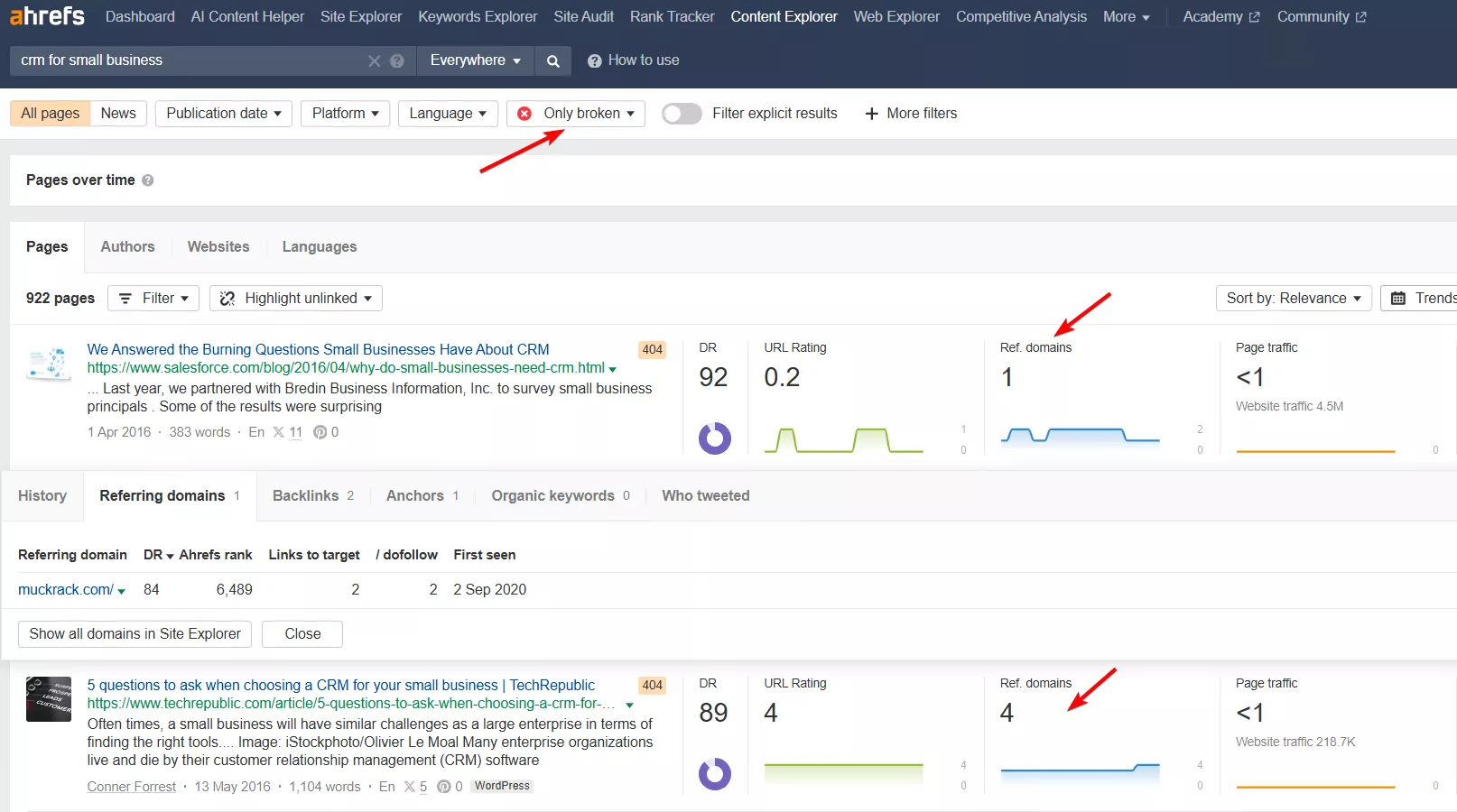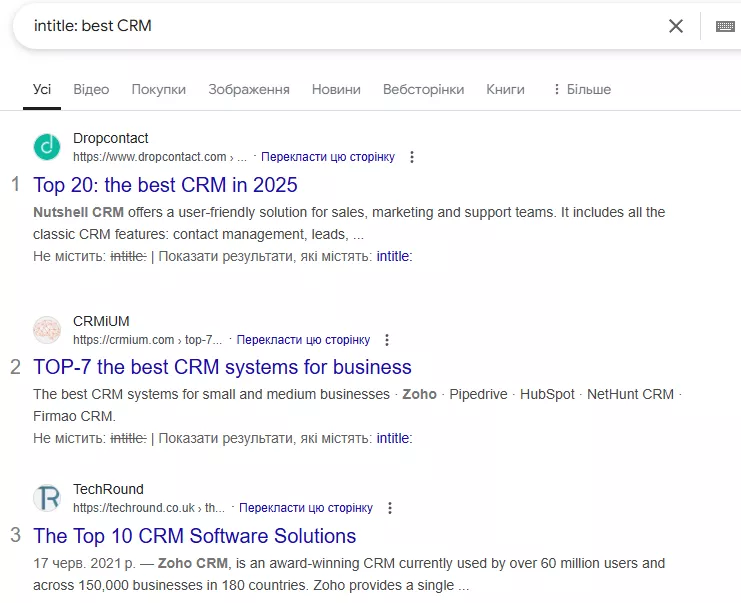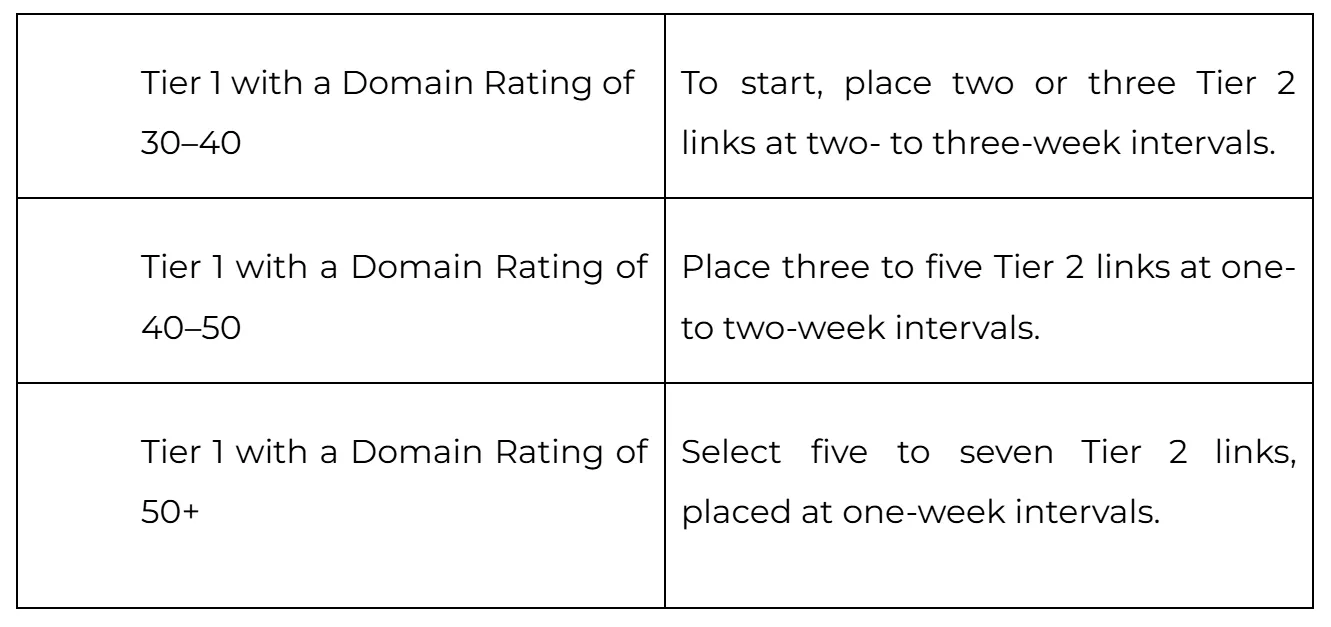Link Building for SaaS: 10 Proven Tactics to Drive Leads
For SaaS companies, external links are more than just a search engine ranking factor; they are also a channel for attracting target users and building brand trust. However, link building in the SaaS industry has its own nuances. For it to be effective, it is necessary to consider the niche's specifics, create content that will attract backlinks, and combine approaches competently.
In this article, I will discuss the ten most common link-building tactics for SaaS companies. I will also provide practical tips to help you develop a link-building strategy.
- The importance of link building for SaaS
- Challenges of link building for SaaS
- The role of content in SaaS link building
- Ten effective link building tactics
- Guest content
- Linkable assets
- Cloud tools and templates
- Partnerships with other SaaS companies
- Expert commentary
- Outreach
- Broken link building
- Lists of the best SaaS companies
- Tier 2 link building
- Parasite SEO
The importance of link building for SaaS
First, link building strengthens a website's position in search results, as backlinks are one of the most important factors in search engine algorithms. Improving search positions through link building directly affects the amount of high-quality, targeted traffic that converts into leads and users of the SaaS product.
Second, high-quality external links placed on strategic platforms will help attract your target audience, i.e., referral leads. These platforms include:
-
Service review and feedback platforms (G2, Gartner, and Capterra)
-
Specialized resources
-
Thematic blogs
-
Lists of popular tools
The third aspect is brand awareness. This additional PR channel creates multiple points of contact with potential customers. Note that although external links to your SaaS solution serve as an additional PR tool, they do not replace it entirely.
Another important aspect of backlinks is their impact on rankings in artificial intelligence services. When articles from external resources mention your brand and link to your website, AI is more likely to recommend your product for relevant queries.
The trend of using ChatGPT, Claude, Perplexity, Gemini, and Copilot to search for information and services is growing, so take advantage of this opportunity to attract leads.
Link building challenges for SaaS
The SaaS niche has its own peculiarities with both benefits and drawbacks. Let’s start by discussing the specific challenges faced by marketers and owners of SaaS companies:
-
Lack of an established base of relevant sites for placement.
-
Lack of internal resources for link building, especially in the early stages of product development, and the need for constant support during the process.
-
It is more difficult to get backlinks for product pages than for informational ones.
-
Narrow specialization often limits the number of potential sites for placement.
-
Links need to be regularly monitored and updated in the event of significant changes to the product, such as changes in functionality or prices.
-
It is difficult to stand out among a large number of similar SaaS solutions.
-
Competitors have an excessive amount of links, especially if one of your focus markets is the US. This requires a combined approach to overcome.
Despite these challenges, SaaS niches offer significant advantages that create additional opportunities for link building:
-
New feature releases, major updates, and integrations regularly generate newsworthy content that can earn mentions and links.
-
Trial periods and demos make it easier to obtain reviews and feedback from experts and users.
-
Due to the technical nature of the products, it is possible to create valuable educational content and tools that naturally attract links.
To effectively leverage these advantages, it's important to not only get mentions but also ensure they're high quality and relevant. This is why content is key when link building for SaaS.
The role of content in SaaS link building
Sometimes, I encounter situations in which articles are created for the website but not for external resources. However, quality content is the foundation of successful SaaS link building, especially if the goal is to optimize budgets and obtain more than just paid links.
When planning a content strategy to obtain external links for SaaS, an SEO specialist should pay attention to certain aspects.
Audience and intent segmentation
Rather than creating general publications for everyone, focus on specific audience segments. For instance, if you offer a CRM system, don't attempt to address all potential use cases simultaneously. Create separate materials for different scenarios, such as “Sales automation in B2B: Processes and metrics” or “How to choose a CRM for small businesses.”
Content depth based on funnel stage
When creating content, consider the level of expertise of the reader and the complexity of the material. You should explain basic concepts to a general target audience or specific aspects to more advanced readers.
To do so, consider the stage of the content funnel:
-
ToFu (Top of Funnel) or Awareness: at this stage, the user has a problem or goal but does not yet know how to solve or achieve it.
-
MoFu (Middle of the Funnel) or Consideration: this is when the user knows what tools can be used to solve the problem or achieve the goal, but the user has not yet chosen a tool.
-
BoFu (Bottom of the Funnel) or Decision: this stage is when the user makes a purchase decision.
Let's take a look at the article Best CRM with Project Management Features. Since this content is intended for the MoFU stage, readers will already have an understanding of the basic concepts of CRM systems. Therefore, rather than providing general explanations such as What is CRM, it is better to focus on:
-
A detailed comparison of the project management functionality of different CRMs.
-
Specific use cases for different team sizes and technical details of integrations with popular tools are also valuable.
-
Technical details of integrations with popular tools.
Consider a tailored approach with articles that showcase your expertise. These will meet user needs and increase the chances of receiving quality backlinks from industry experts and technical blogs interested in detailed comparisons and in-depth analysis. These types of publications are much more effective for link building than general review articles, which rarely receive mentions from authoritative sources.
Structure and format
To naturally attract links, content must be created according to the principle of value-added content — content that provides additional value to the audience. In other words, add unique value to the topic rather than simply retelling well-known information.
For example, if you are reviewing CRM systems, share your insights from experience, customer survey results, examples of non-standard use of functionality, or detailed technical comparisons that are difficult to find elsewhere.
The text must also adhere to the other basic principles:
-
Structured with clear headings and subheadings.
-
Includes analytical data, such as research results and statistics.
-
Enriched with visualizations.
-
Contains optimized title and meta description tags.
Taking AEO principles into account
Answer Engine Optimization (AEO) involves optimizing for AI assistants to promote brand visibility in their responses. These assistants include ChatGPT, Perplexity, Gemini, Claude, and Copilot.
For software as a service (SaaS), ranking in AI services and corresponding search-result blocks provides an additional opportunity to generate leads and increase brand awareness. This should be viewed as an added benefit of link building.
High-quality content tailored to specific user queries and external placements is one of the key factors for success with AI agents. The specifics of user queries in AI must be considered when creating content for external platforms.
Ten effective link building techniques for SaaS
Now, let's move on to discuss practical ways of obtaining external links. Note that this article will not discuss basic SEO principles for evaluating the metrics of selected sites.
1. Guest posting
Guest posting involves creating expert articles for publication on external, relevant websites to obtain backlinks and reach a new audience.
Below are the main options for implementing this strategy.
Competitor analysis
Use Ahrefs, Serpstat, or similar tools to analyze your competitors' link profiles. Of course, such articles are not specifically marked, so do this instead:
-
Look for patterns in the authorship of articles. Guest posts are often published on behalf of the CEO, product manager, or other representatives of the competitor you are researching.
Example of guest content from Ringostat on the Serpstat blog
-
Analyze the format of the links. Guest posts usually contain links to the homepage, and the surrounding anchor text references the company's area of expertise. Articles often refer to the author's profile as well:
-
Pay attention to websites that publish articles from other companies in your niche, as this may indicate an openness to guest posts. The Link Intersection feature from Ahrefs can help you with this.
-
Check the Authors, Contributors, or Expert Corner sections of such websites. There, you can often find previous guest posts by external experts, as well as mentions of the authors' companies. For example, Ahrefs recruits guest experts in this manner, and the descriptions often include the names of the authors’ companies.
Example of a guest author page on Ahrefs
How to search for platforms
Use search queries such as write for us + [your niche] or guest post guidelines + [topic]:
In addition to basic SEO metrics, analyze the following when evaluating domains:
-
Audience activity and engagement, such as comments and shares.
-
The site's presence on social networks.
-
The level of interaction with posts, as well as whether the site actively shares guest texts.
This will enhance the effect of publishing your content with a link.
Next, create an article, and place a link where appropriate. Once you have approved the material, publish it and track the results.
2. Linkable assets
The linkable assets tactic involves creating particularly valuable articles that naturally attract links due to their uniqueness and usefulness within the industry:
-
Niche research
-
Original statistics
-
Niche experiments
-
Infographics
Although it seems simple at first glance, implementing this tactic requires the efforts of an entire team. But it's worth it!
Research and statistics articles by the Ahrefs team
This type of content naturally attracts the most external links. Additionally, you will increase brand awareness and foster industry connections.
Analyze opportunities for creating linkbait content based on your company's internal resources. Conduct surveys or meetings with representatives from the product, customer success, and sales teams.
Analyze internal data and cross-check it against your expertise. This data could include:
-
Anonymized data on your product's usage
-
Support service requests
-
Analysis of metrics and user behavior patterns
-
Customer surveys
Additionally, you can research discussions in specialized communities and examine competitors' publications.
Based on the collected data, create a preliminary list of possible topics and formats.
Ideally, you should act according to the principle of "work smarter, not harder" by implementing one topic in several formats simultaneously, such as text articles and infographics. Taking into account all the necessary resources, prioritize the topics, create a roadmap, and set deadlines.
For example, you can conduct research on the impact of specific product features on the productivity of particular client teams, using survey results as a basis. You can also analyze the most common scenarios for using your product based on internal data.
3. Cloud tools and templates
These involve creating free tools, calculators, generators, and templates that solve specific problems for the target audience. This type of content is more complex because it requires data collection and analysis, as well as the development of a full-fledged tool.
This type of content tends to be included in various compilations of useful tools and naturally generates mentions over time. It creates long-term value for users by attracting new traffic to the site and improving behavioral factors. It can also generate leads for the main product.
Free tools from Ahrefs, for example, are among the top non-blog-related external links.
Examples of cloud tools and templates:
-
Calculators
-
Services for manual data retrieval
-
Data validators
-
Generators of standard documents or templates
-
An API for simple yet useful operations
When using this strategy, it is important that such a tool targets your audience and meets their actual needs.
4. Partnerships with other SaaS companies
This way to obtain links involves mutually beneficial cooperation with companies that create complementary products.
Attracting links through these partnerships is an added bonus since they are formed with long-term business goals in mind. When using this tactic, it is important to provide real value for users of both services and ensure the products are technically compatible.
Examples of such partnerships include a CRM system partnered with an email marketing platform or a digital asset design and management tool.
Salesforce and MailChimp integration with partner site links
Once technical integration between products has been implemented, partners should place each other's products on their respective pages and publish announcements about this integration.
As an addition to this strategy, consider creating joint content. This could include guides on using the integrated product and both services separately to attract new users. Both companies should also cooperate to update technical documentation for current customers. Exchanging guest posts is another great way to expand your target audience and get additional links:
A Guide to Connecting a Salesforce Account to Mailchimp
5. Expert comments
This is an effective way to get quality mentions in the media.
Journalists, bloggers, and authors often seek out expert comments from specialists to support their materials.
The most popular platform for this was previously HARO (now Connectively), but it has been out of service since December 9, 2024. Currently, you can monitor journalist requests through platforms like SourceBottle and ProfNet. The key is to respond promptly (within a few hours) to relevant requests as an official product representative.
This can get you mentions of both yourself and your product in a natural context, strengthening your personal brand. Typically, you will be asked to comment on industry trends, technological changes, and solutions to specific problems.
However, keep in mind that you need to craft a high-quality, expert-created response without the aid of artificial intelligence. Otherwise, you will waste your time, your response will not be published, and you will not receive a link.
I would like to emphasize that this method is specific and not easy. Journalists are very cautious about such comments because link-building specialists often spam them with requests, mainly to get a link, not to share an expert answer.
Also, keep in mind that you can only get links to your product's main page with a branded anchor. In other words, this method cannot be used on its own. Given the small number of relevant queries in a typical SaaS niche and the conversion rate, it’s a must to use other methods in addition to this.
6. Outreach
Outreach involves searching for and establishing contact with the owners of relevant websites, as well as bloggers, journalists, and industry experts, to obtain high-quality backlinks.
This is classic link building. Here, I will briefly describe the main implementation steps, and you can read the detailed strategy in the article dedicated to outreach links.
-
Searching for potential sites:
-
Building a list of keywords to search for relevant sites.
-
Analyzing the top search results for target queries.
-
Researching competitors' backlink profiles using Ahrefs or Serpstat.
-
Creating an initial database of sites.
-
Site quality assessment:
-
Checking the thematic relevance and expertise of the content.
-
Analysis of key metrics, such as region, subject matter, domain rating, traffic, and link profile.
-
Assessment of editorial policy and publication requirements.
-
Removal of sites displaying signs of link farms and PBNs.
-
Establishing contacts:
-
Searching for the contact details of editors and other responsible individuals on the pages of the resources themselves.
-
Verifying the email addresses found.
-
Preparing personalized pitch letters.
-
Requesting terms of cooperation and placement costs.
-
Selection and planning:
-
Analysis of proposals and prices received.
-
Assessment of the price-to-quality ratio for each site.
-
Creating a content plan that takes the webmasters' requirements into account.
-
Agreeing on the terms and formats of publications.
-
Implementation and monitoring:
-
Creating articles in accordance with the platform's requirements.
-
Coordinating materials with editors.
-
Controlling the correct placement of links.
-
Indexing and link weight transfer checking.
-
Effectiveness analytics:
-
Tracking the positions of pages to which links lead.
-
Monitoring link transitions.
-
Assessing the impact on the site's overall position.
-
Forming recommendations for future placements.
As you can see, the process is routine and lengthy. Since implementing it requires significant human resources and ongoing support, it should be delegated to contractors.
7. Broken link building
The method involves finding broken links on relevant websites and offering your own publications as replacement links.
While webmasters will benefit from improved content, you are unlikely to be able to place your own content for free. Additionally, the conversion rate, i.e., the number of successful responses, is moderate at 5–10%. Therefore, this method is worth using only if you have the necessary resources. If you don't, it is better to use outreach.
The main steps are as follows:
-
Search for broken links. Select a topic. You may have already written articles for this topic, or it may still be in the planning stages. In Ahrefs, enter the topic in the Content Explorer report and select “Only broken” links from the dropdown menu.
In the list, you will see articles similar to yours with 404 or 410 response codes and the domains that link to these deleted articles. These domains are what we are interested in. Create a list of all high-quality domains.
-
Search for contacts. Find the contact details of editors and other responsible personnel on the pages of the resources themselves. You can typically find this either in the footer or on the contact pages.
-
Communicate with webmasters or editors. Send a message stating that you came across an inactive link while researching a specific topic on their site, and offer them relevant material as a replacement.
I would like to remind you that this is unlikely to be done for free. Before you proceed, consider whether the price is worth the quality.
-
Verify the results. If you are satisfied with the results, monitor the changes and record the page metrics before receiving the links. Be sure to do this again two to three months afterwards.
8. Lists of the best SaaS (Link insertion)
Link insertion is a technique for obtaining backlinks by adding mentions of your product to published content, most often in lists and reviews of software.
This technique is especially effective for SaaS because there are many review articles for SaaS products, such as Top X Tools for [your niche] or Best Software for [specific task].
Although it sounds simple, it is important to understand the facts.
-
This method is not free. High-quality platforms operate on a commercial basis.
-
Depending on the niche and region, the response rate to requests usually does not exceed 10–15%. So, if you are planning to get 10 such mentions, you have to target at least 100–150 publications.
-
Some platforms may refuse due to exclusive agreements with other brands. The process also takes time. From initial contact to publication, it can take several weeks or even months.
But this won't be your only method. With the right approach and budget, it's still an effective way to get quality links and traffic from relevant, high-ranking review articles with stable traffic.
Here is the basic implementation algorithm:
-
Search for relevant articles.
-
Use search engines with the intitle: operator and queries such as best [specific tool], top [your niche] tools, and alternatives to [your competitor].
-
-
Through analysis with Ahrefs, Serpstat, or other SEO tools, you can see where your competitors are. Pay attention to articles containing the year in the URL or title, as well as articles with names like Top X Tools for [your niche] or X Best Software for [specific task].
-
Evaluate potential sites:
-
Verify the relevance of publications by date of release or update.
-
Analyze key indicators such as region, topic, domain rating (DR), traffic, and link profile. This is classic SEO.
-
Search for contacts:
-
If the publication has a specific author, search for them on LinkedIn.
-
If the author is not specified, search for editors' contacts on the "Contacts" pages and similar sources.
-
Prepare a pitch:
-
Create a description of your product's unique advantages while adhering to the current structure of each article.
-
Develop an offer for free access to test the product (if possible) to increase reader engagement.
-
During the communication process:
-
Personalize the initial contact and emphasize value for readers.
-
Provide structured information about your product.
-
Offer to update any outdated information in the article.
-
Be willing to provide unique data or insights to enrich the material.
-
Monitoring and support (for positive responses):
-
Track changes and verify the accuracy of the information and links.
-
Update the provided information regularly (e.g., prices, functionality). These steps will help you maintain contact with the editorial office.
9. Tier 2 Link Building
Tier 2 link building is a tactic that increases the weight and authority of your site's current backlinks by creating additional links to pages that already link to you. In other words, it involves creating links to links.
Schematically, it looks like this:
It is worth focusing on strengthening the highest-quality Tier 1 links. Use this method to leverage medium-quality sites at a more affordable price since they don't link directly to your site. In other words, expensive, high-quality links are for Tier 1, while more economical options are for Tier 2.
The basic algorithm for implementing second-level link building is as follows:
-
Analyze your current Tier 1 links. Select the strongest or most important links to strengthen, and record the metrics of the pages that link to you, as well as the pages on your site that they link to.
-
Develop tactics for each Tier 1 link. Determine the optimal number of Tier 2 links. Consider the speed at which the site receives natural links.
Here is a rough guideline:
-
Search for Tier 2 sites. The selection criteria will be less stringent than the criteria for Tier 1 sites. Focus on thematically related niches, and create a database of potential sites.
-
The rest of the process is similar to the outreach process:
-
Find the contact details of the person responsible for placement.
-
Communicate with webmasters.
-
Create content according to their requirements.
-
Check the placement and analyze the metrics of the Tier 1 pages and your site approximately two to three months after placement.
10. Parasite SEO
Parasite SEO is a tactic that uses high-authority websites to promote your product. Don't be alarmed by the name; it has no negative connotations but simply reflects the principle of leveraging existing authoritative platforms.
The method involves creating profiles and content and posting information on popular services trusted by search engines. Examples include Quora, Reddit, LinkedIn, Medium, GitHub, Stack Overflow, and Product Hunt.
This tactic is particularly useful for SaaS companies with limited link-building budgets and for early-stage startups that need to gain visibility quickly with minimal investment. However, a niche expert needs to be involved to create valuable content.
Algorithm for implementing parasite SEO for SaaS companies:
-
Select authoritative platforms. Choose platforms that are relevant to your niche and have high domain authority. For developers, these would be Stack Overflow and GitHub, as mentioned above. Other universally popular platforms include Quora, Reddit, LinkedIn, and Medium.
-
Create high-quality profiles. Set up comprehensive profiles for your company or product. If possible, add a link to your main website.
-
Generate valuable content. Create useful materials for each platform and adapt the content to the site's format. Actively participate by answering users' questions and joining discussions.
-
Monitor results. Monitor the positions of your profiles and posts in search results. Track the traffic from each platform.
This approach allows you to gain additional positions in search results and increase your reach by leveraging the authority of popular sites.
Conclusions
In SaaS niches, the process of obtaining external links has specific challenges and advantages. For a successful link building strategy, these nuances must be considered when starting work in this area. Although there are many link-building tactics, not all may be suitable for you. An SEO specialist can help you select the right ones for your project by considering your budget, the competitive environment, and your website's technical condition.
Related Articles
Segments vs. Audiences in Google Analytics 4: A Comprehensive Setup Guide
You will learn how to correctly set up custom audiences, allowing you to save time and gain insight into your audience
PPC for E-commerce: How to Buy Attention Without Going Broke
Learn how PPC for e-commerce can drive fast sales for your store without draining your budget. Smart strategies, beginner tips, and proven ways to scale profitably.
Personalization 2.0: Breaking the Deadlock of Cold Newsletters
Most leads in managerial positions receive dozens of similar messages every day. Below, I will present the algorithms and techniques that increased our partners' campaign conversion rates from 1% to 11%

